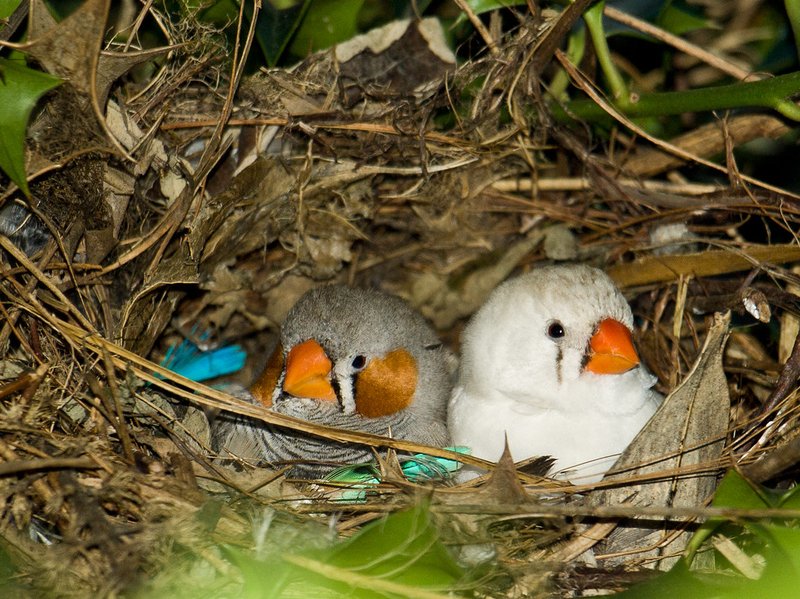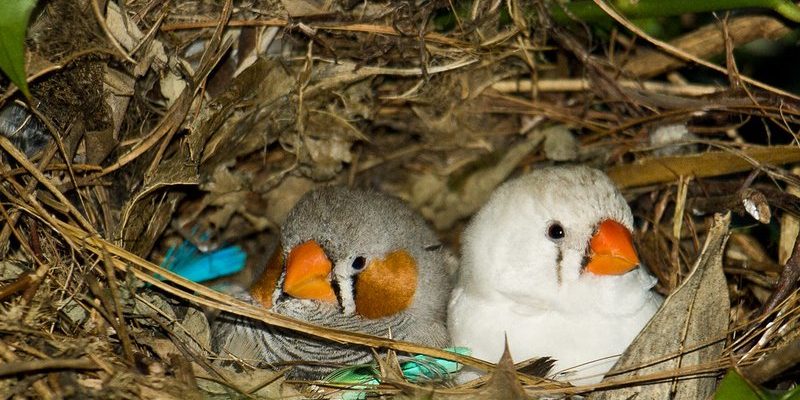
Zebra finches are popular pets known for their sweet songs and vibrant plumage. But it’s their nesting habits and lifecycle that reveal how well these small creatures can adapt and thrive. Imagine being a tiny bird in the wild, working tirelessly to ensure your babies are safe and sound. Let’s dive deeper into their world, exploring everything from their nesting materials to the journey from egg to fledgling!
Nesting Materials and Construction
Nest building is one of the most intriguing parts of a zebra finch’s life. So, what do these little architects use to create their homes? Honestly, they’re not picky at all. In the wild, zebra finches typically gather natural materials to construct their nests.
- Grasses: They often collect dried grasses and twigs, weaving them together to form a solid structure.
- Feathers: Zebra finches love to add soft feathers to the inside of their nests, making it a cozy spot for their eggs.
- Strings and fibers: If they find bits of string or plant fibers, they’ll incorporate those, too!
Here’s the thing: male zebra finches usually take the lead in nest building. They start by selecting a spot—often in dense vegetation where they can feel safe from predators. Once they’ve found the perfect location, they begin collecting materials, singing to attract females. It’s a bit like putting out a sign that says, “I’m a great partner and a fantastic builder!”
Nesting Behavior and Pair Bonding
Zebra finches are known for their strong pair bonds. When a female chooses a male, they often mate for life. Let me explain how this works. Once the male finishes building the nest, he’ll often call to the female, encouraging her to check out his handiwork. If she approves, she’ll move in, and together they’ll create a warm and inviting space for their future chicks.
During this time, the pair engages in some sweet behaviors, like preening each other and singing duets. This bonding ritual is essential because it strengthens their relationship, ensuring they work well together as parents. After all, raising chicks is no easy task!
Once they’re settled in, the female lays her eggs—typically anywhere from three to six. She might lay one egg every day or two until the clutch is complete. The couple then takes turns sitting on the eggs, keeping them warm and safe until they hatch.
The Egg Stage: What to Expect
So, what happens once the eggs are laid? The incubation period for zebra finch eggs usually lasts about 12 to 14 days. During this time, both parents will take turns brooding the eggs. Here’s where it gets interesting: while one parent sits on the eggs to keep them warm, the other goes out to find food. It’s teamwork at its finest!
You might be wondering what the eggs look like. They’re typically a pale blue or white color, speckled with tiny spots. It’s quite charming! Once the eggs finally hatch, the parents are in for a busy time.
Chick Development: From Hatchlings to Fledglings
When the chicks emerge, they’re tiny and helpless, with no feathers and closed eyes. They rely entirely on their parents for food and protection. The parents are incredibly devoted, feeding their chicks a diet of seeds, insects, and even their own regurgitated food—kind of like a homemade smoothie for a growing baby!
In just a couple of weeks, the chicks begin to develop their feathers. Seeing them grow is like watching a time-lapse video of a flower blooming. They hit several milestones along the way:
- Feathering up: Their feathers will come in, making them look fluffy and adorable.
- Learning to chirp: As they grow, they’ll start practicing their vocalizations, preparing for the songs they’ll sing as adults.
- Exploring: Once they’re about three weeks old, they’ll begin to venture out of the nest, testing their wings and getting ready to fly.
It’s a beautiful sight as they take their first flights, wobbly but enthusiastic. The parents continue to care for them during this phase, ensuring they stay safe.
Post-Fledging Care and Independence
After the chicks leave the nest, they still need some guidance from their parents. This period is crucial for their development. The parents will show them where to find food and how to socialize with other finches. Honestly, it’s kind of like sending them off to school for the first time!
This phase lasts for several weeks. The young finches learn essential survival skills, gaining the confidence they need for independent living. It’s all part of the zebra finch lifecycle, which can be quite beautiful to witness.
Eventually, the young birds become fully independent, and they may even start looking for mates to begin their own families. The cycle continues, demonstrating the resilience of these remarkable birds.
Why Zebra Finch Nesting Habits Matter
Understanding zebra finch nesting habits and their lifecycle isn’t just for birdwatchers or pet owners. It shines a light on the broader themes of family, survival, and adaptation in the animal kingdom. When you know how these little ones thrive, it deepens your appreciation for the natural world.
Supporting zebra finches in their habitat, whether in the wild or as pets, helps ensure their future. Understanding their needs can help pet owners create an environment where they can thrive. After all, there’s something special about witnessing the magic of life unfold right before your eyes.
In conclusion, zebra finches are not just charming little pets; they’re fascinating creatures with complex nesting habits and life cycles. They remind us of the beauty of nature’s design and the importance of nurturing future generations. Whether you’re a pet owner or just curious about these delightful birds, there’s always more to discover. Happy birdwatching!

